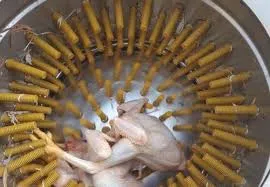Compact Feed Processing Equipment for Small Scale Operations and Agricultural Use
Nov . 08, 2024 14:07 Back to list
Compact Feed Processing Equipment for Small Scale Operations and Agricultural Use
The Importance of Small Feed Processing Machines
In the ever-evolving agricultural sector, the demand for efficient and sustainable farming practices has never been higher. One of the pivotal components in achieving these goals is the use of small feed processing machines. These machines have become increasingly popular among farmers and small-scale producers due to their numerous benefits and the convenience they offer.
Understanding Feed Processing
Feed processing involves transforming raw agricultural products into suitable feed for livestock. This process ensures that animals receive balanced nutrition, enhancing their growth and productivity. Different types of livestock require various nutritional elements, and feed processing allows farmers to customize feed blends that meet these specific needs. Small feed processing machines facilitate this customization, making it easier for farmers to tailor their feed to the requirements of their livestock.
Advantages of Small Feed Processing Machines
1. Cost-effectiveness Small feed processing machines allow farmers to produce their own feed, significantly cutting down on costs associated with purchasing commercial feed. By processing locally available raw materials, farmers can create a high-quality feed that meets the nutritional needs of their animals without the premium price tag.
2. Customization With a small feed processing machine, farmers have complete control over the ingredients used in their feed. They can incorporate locally sourced grains, seeds, and additives to create a balanced, nutrient-rich feed tailored to their livestock’s needs. This level of customization helps improve animal health and productivity.
3. Quality Control When producing feed on their own, farmers can ensure that the feed quality is up to their standards. They can monitor the hygiene and freshness of the ingredients used, minimizing the risk of contamination and ensuring that their animals receive safe and nutritious feed.
4. Sustainability Small feed processing machines promote sustainability by encouraging the use of local resources. By utilizing locally available ingredients, farmers reduce their carbon footprint and support the local economy. This localized approach also minimizes the transportation costs and emissions associated with importing commercial feed.
small feed processing machine

5. Flexibility and Convenience Small feed processing machines are generally lightweight and compact, making them easy to use in various farm settings. Farmers can produce feed as needed, allowing them to respond quickly to changes in feed demand. This flexibility is particularly beneficial during times of fluctuating livestock growth rates or seasonal variations in feedstock availability.
Types of Small Feed Processing Machines
Various types of small feed processing machines are available in the market, catering to different needs and budgets. Common types include
- Hammer mills These machines are used to crush and grind raw materials into finer particles, making them easier to mix and digest for livestock.
- Mixers Feed mixers are essential for blending various ingredients, ensuring a uniform distribution of nutrients throughout the feed.
- Pellet mills These machines take the mixed feed and compress it into pellets, making it easier for animals to eat and digest. Pelletized feed also reduces waste and improves feed efficiency.
- Extruders Extruders are used for cooking and shaping feed, particularly for aquaculture and pet food applications. They can help to enhance the digestibility of feed ingredients and provide an appealing texture for animals.
Conclusion
In conclusion, small feed processing machines play a crucial role in modern agriculture by enabling farmers to produce high-quality, customized feed for their livestock. With their cost-effectiveness, flexibility, and sustainability benefits, these machines are essential tools for improving animal health and agricultural productivity. As more farmers adopt small feed processing technologies, the agricultural sector can look forward to a future driven by innovation and self-sufficiency. In a world where food security and sustainability are paramount, investing in small feed processing machines is not just a trend, but a necessity for the thriving future of agriculture.
-
High Performance Exhaust Fan – Efficient Ventilation Solutions for Home
NewsJun.10,2025
-
High-Quality Gestation Pen for Sows Durable Mobile Pig Pen & Simple Pig Pen Solutions
NewsJun.10,2025
-
High Quality Rabbit Cage Double Tier Designs & Welded Wire Mesh Supplier
NewsJun.10,2025
-
Floating Fish Feed Machine - High Efficiency Floating Fish Feed Extruder for Small Scale Production
NewsJun.10,2025
-
Premium Poultry Housing Solutions Mobile & Commercial Free Range Options
NewsJun.10,2025
-
Industrial FRP Fans Corrosion-Resistant Blades & Centrifugal Systems
NewsJun.09,2025






